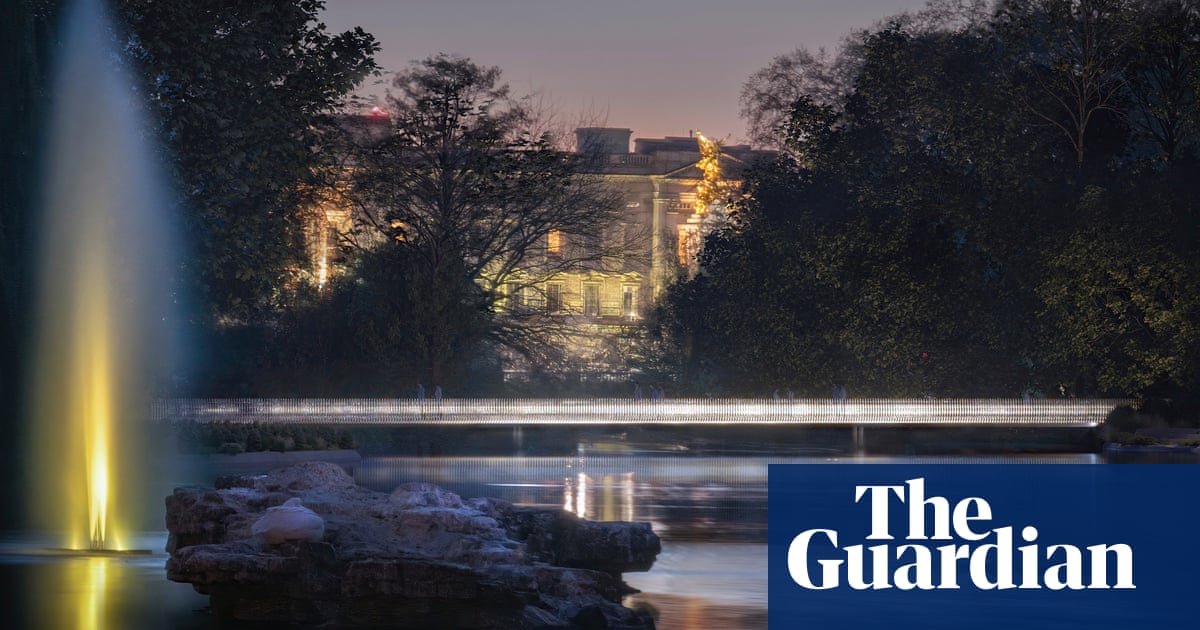The national memorial toQueen Elizabeth IIwill include a new bridge in St James’s Park designed by Norman Foster.
The peer, who was once among architects to accuse King Charles of using his “privileged position” to “skew the course” of the Chelsea barracks development, described beingawarded the projectas an honour.
His translucent glass “unity bridge”, inspired by Elizabeth’s wedding tiara, is said to symbolise her as a “unifying force”.
Other features of Lord Foster’s design for the transformation of the centralLondonpark include a statue of the late queen in a new civic space at Marlborough gate and a Prince Philip gate on the other side of the park on Birdcage Walk with a statue of the prince. There will also be a “family of gardens” and meandering paths.
The bridge, with its cast-glass balustrades, will replace the park’s blue bridge near Buckingham Palace. It is inspired by the Queen Mary fringe tiara worn by Elizabeth on her wedding day in 1947.
Featuring 47 bars of diamonds, its antique metal frame snapped when the princess was getting ready on the morning of her wedding and was rushed to jewellers Garrard to be fixed. The headpiece was of great sentimental value to the queen.
Foster said: “Her majesty loved history and tradition, so this is reflected in the inspiration of the original design of St James’s Park by Sir John Nash.
“Some of his principles have survived, while others have been lost and will be restored, creating a family of gardens joined by gently meandering paths.
“I knew the queen on formal occasions but also enjoyed her informality when attending events as a member of the Order of Merit.
“We have sought to reflect these qualities of the formal and informal in our design, with an appeal across a wide range of ages and interests.
“To these ends, we have discreetly stretched the boundaries of art and technology with a deliberately gentle intervention.
“Our design will have the minimum impact on the nature and biodiversity of the park and it will be phased to ensure that the precious route across it will never be closed.
“At the heart of our masterplan is a translucent bridge symbolic of her majesty as a unifying force, bringing together nations, countries, the Commonwealth, charities and the armed forces.”
Foster said of his plan for a statue of both the Queen and Philip side by side at the Prince Philip gate: “We showed them together and, in a way, there was this inseparable quality which we sought to convey.”
Foster + Partners won the competition after being selected by the Queen Elizabeth memorial committee from five shortlisted designs, with feedback taken from a public vote, stakeholders and cultural experts.
The winning team includes the artist Yinka Shonibare, the ecologist Prof Nigel Dunnett and the landscape architect Michel Desvigne Paysagiste.
The proposal for the memorial will be subject to change, with the committee working with the team on the final design, which is expected to be unveiled next year, which would have been the queen’s 100th birthday year.
The next stage will be to appoint a sculptor and decide on the designs of the statues.
Foster is known for his designs for the Gherkin skyscraper and Millennium Bridge in London as well as renovations of the Reichstag in Berlin and the great court at the British Museum.
